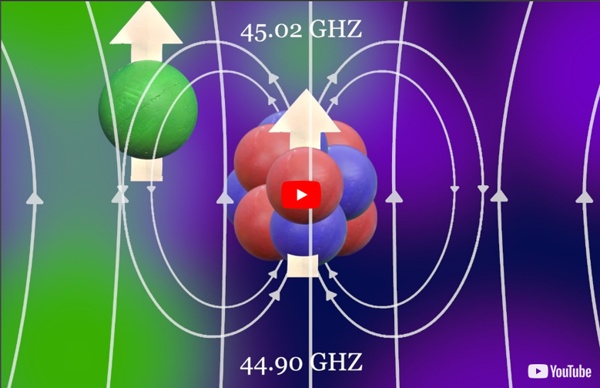



Physicists Discover the Secret of Quantum Remote Control Teleportation is one of the more extraordinary phenomena in the quantum world. It allows a quantum object, such as a photon or electron, to travel from one location to another without passing through the space in between. Teleportation is a standard procedure in any decent quantum mechanics laboratory. If that sounds exotic, you ain’t seen nothing yet; teleportation is about to get a whole lot weirder. That will allow them to manipulate one quantum particle while watching the effects occur in another particle elsewhere. The basic set up is a straightforward extension of traditional teleportation. In mathematical terms, both particles are described by a single wave function. Teleportation occurs when the first of these entangled particles interacts with another quantum particle, let’s call it X. The trick that physicists have perfected is to arrange this interaction so that the second entangled particle ends up in the same state as the quantum particle called X.
icists build quantum refrigerator based on four quantum dots (Phys.org) —With the goal of understanding the relation between thermodynamics and quantum mechanics, physicists have recently been investigating the fundamental limits of the smallest possible quantum refrigerator. As a refrigerator, the device must be able to transfer heat from one reservoir to another. In a new study, physicists have proposed a quantum refrigerator consisting of just four quantum dots, each in contact with a thermal reservoir. They theoretically show that this system can extract heat from the coldest reservoir and cool the nearby quantum dot, making it one of the smallest quantum refrigerators proposed to date. The physicists, Davide Venturelli, Rosario Fazio, and Vittorio Giovannetti at the Scuola Normale Superiore in Pisa, Italy, have published their paper on the minimal quantum refrigerator in a recent issue of Physical Review Letters. The proposed system consists of four quantum arranged in a square configuration, which the researchers call a "quadridot."
eufisica - Two papers investigate the #thermodynamics of Researchers discover quantum algorithm that could improve stealth fighter design (Phys.org) —Researchers at the Johns Hopkins University Applied Physics Laboratory (APL) have devised a quantum algorithm for solving big linear systems of equations. Furthermore, they say the algorithm could be used to calculate complex measurements such as radar cross sections, an ability integral to the development of radar stealth technology, among many other applications. Their research is reported in the June 18 issue of Physical Review Letters. The field of quantum computing is still relatively young. While several few-qubit systems have been built, a full-scale quantum computer is still years away. Theoretical breakthroughs in quantum algorithm design are few and far between. "But it didn't quite deliver; based on their process, no one could figure out how to get a useful answer out of the computer," explains APL's David Clader, who, along with Bryan Jacobs and Chad Sprouse, wrote "Preconditioned Quantum Linear System Algorithm."
icists create lightning in the race to develop quantum technology microchip (Phys.org) —Physicists at the University of Sussex have invented a powerful new microchip capable of holding the voltage equivalent to a micronscale bolt of lightning that could be the key for developing next-generation, super-fast quantum computers. Quantum technology may well revolutionise the way we use technology in a way similar to the emergence of what are now referred to as "classical" computers. Through having immense processing power, super-fast computers could solve, in a matter of minutes, certain mathematical problems that would take the world's current fastest computer 10,000 years to achieve. But the challenge for researchers has been in how to harness the ions (charged atoms) that can store the immense amount of memory required to build quantum technology devices. And creating microchips powerful enough to provide a backbone for such technologies has been a field of intense research The researchers created the microchip as part of a collaboration with Prof.